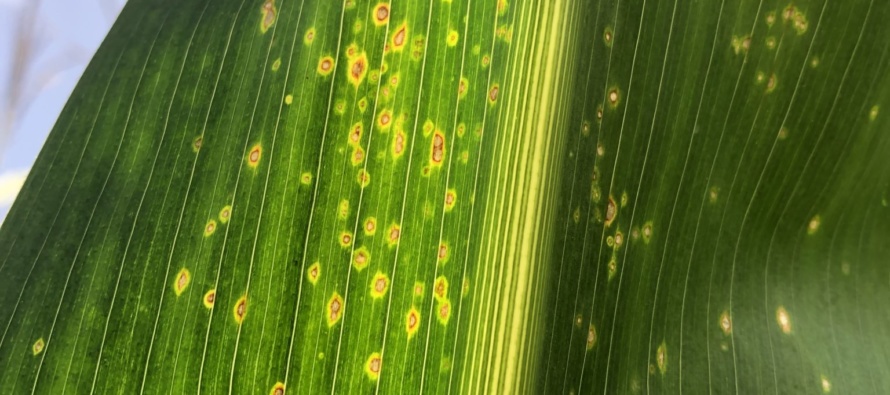2019 MSU Corn Hybrid Trial Disease Evaluations NON-irrigated Locations

Related Articles
- 2010 Soybean And Corn Variety Trial Data 3
- Rice Variety Trial Results For 2010, Plus Rice Research Report 0
- Evaluation of Peanut Varieties in Mississippi, 2010 0
Latest Tweets

Northern corn leaf blight (NCLB). One of the most notable corn diseases based on the size of the lesions.
During 2019, corn hybrid trials were evaluated to determine the response of corn hybrids planted in our production system to the most commonly occurring foliar diseases. Over the past several years, numerous questions have originated regarding the response of hybrids to foliar diseases such as Curuvularia leaf spot. At present, little if any information exists regarding the impact of Curvularia leaf spot on yield or even whether or not management options should be considered. Observationally, large visual differences in the incidence and severity of Curvularia leaf spot have been made on a small number of corn hybrids in Stoneville, but at no time have a large number of hybrids been evaluated for their response to something as widespread as Curvularia leaf spot in MS.
The foliar diseases present within each of the OHT locations (irrigated (n=4) and non-irrigated (n=4)) were evaluated at approximately dent (R5). The diseases present at each location were observed based on natural occurrence. Curvularia leaf spot and northern corn leaf blight (NCLB) were the two most prevalent diseases at all locations. In addition, southern corn leaf blight (SCLB), which is predominantly a lower canopy disease, was evaluated at several of the locations since I have had numerous questions regarding the increased incidence of this particular disease recently.
Disease evaluations were based on the presence of each of the diseases within the respective area of the canopy where the disease is most often observed and where the disease could be a concern with regards to yield reduction (ear leaf and above). Curvularia leaf spot and NCLB were evaluated based on their presence on the ear leaf and above. SCLB was observed from the ear leaf and below. All evaluations were conducted using a 0-9 scale where 0=no disease present, 5=a moderate level of disease, and 9=leaves completely covered with the specific disease.

Differences in the incidence and severity of Curvularia leaf spot were common between hybrids at all locations. The “plot” photo (either 1 or 2) on top, should be considered with the “close-up” photo (corresponding with the plot photo) on the bottom, of each representative hybrid.
As some background regarding the irrigated and non-irrigated OHT locations. Each specific irrigation regime generally contains a different number of hybrids. All locations were planted as two row plots and replicated four times, except at the Stoneville irrigated clay location where one of the replicates was lost due to flooding. The irrigated OHT contained 75 hybrids while the non-irrigated locations contained 57 hybrids. Between the two different irrigation regimes, 78 unique hybrids were planted at the 10 OHT locations. However, disease observations were only made at eight of those locations due to time constraints.
Non-irrigated MSU Corn OHT locations:
Olive Branch (Olive Branch summary table)
Raymond (Raymond summary table)
Stoneville (loam) (Stoneville (loam) summary table)
Verona (Verona summary table)
To see the response of hybrids at the irrigated MS locations visit: https://www.mississippi-crops.com/2019/12/04/2019-msu-corn-hybrid-trial-disease-evaluations-irrigated-locations/




Let me tell You a sad story ! There are no comments yet, but You can be first one to comment this article.
Write a comment